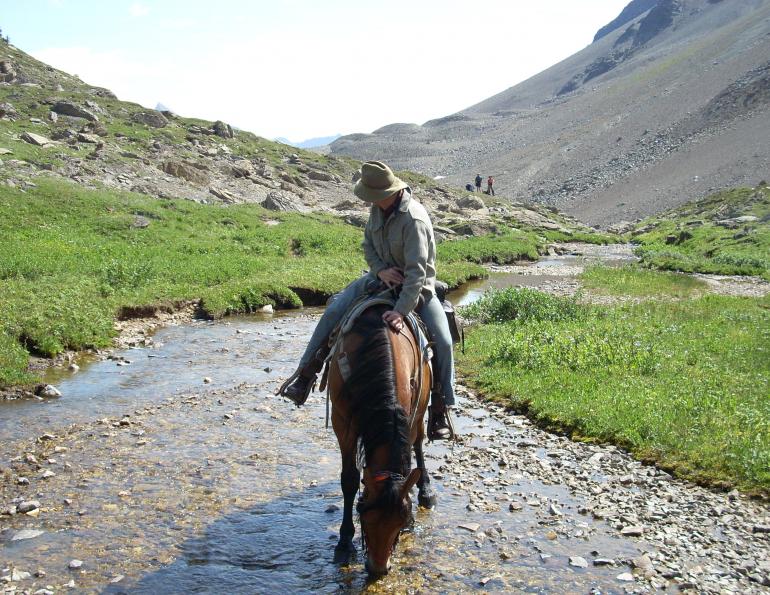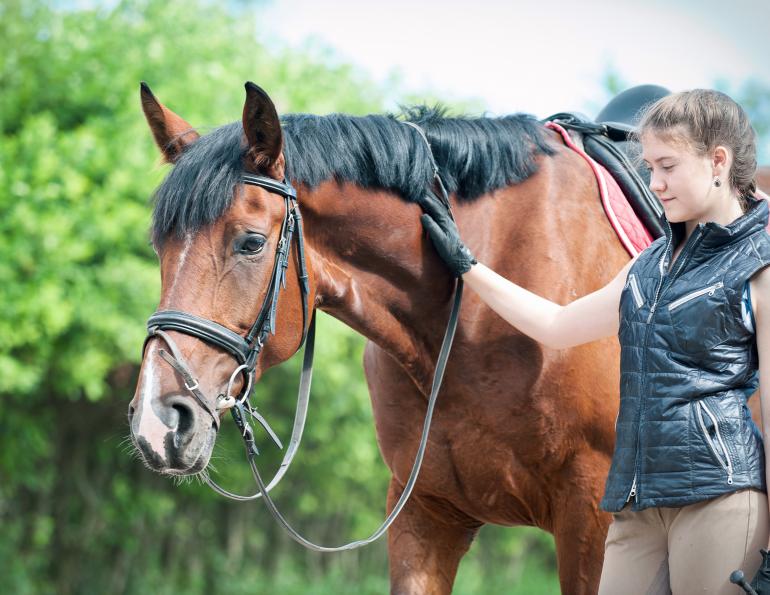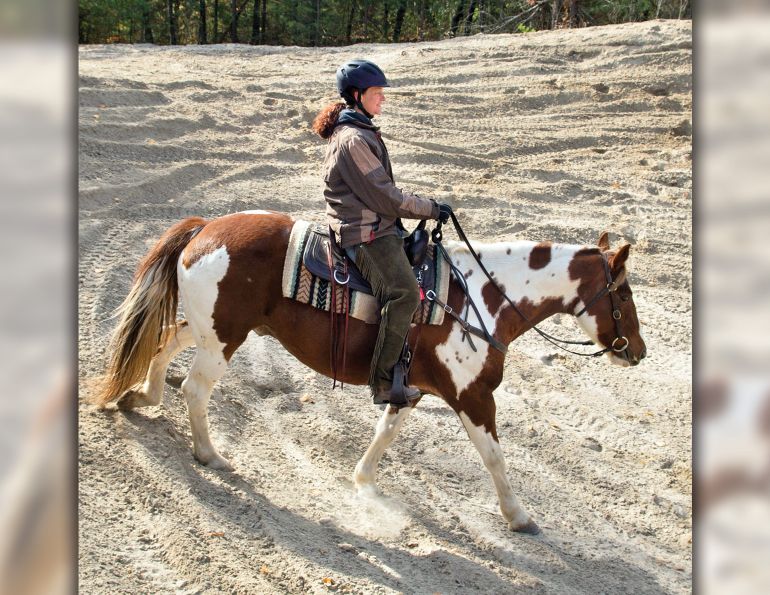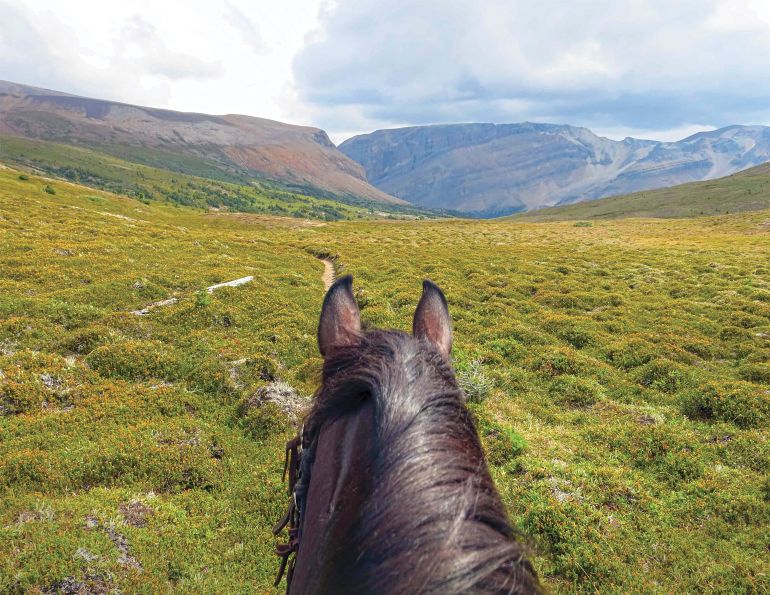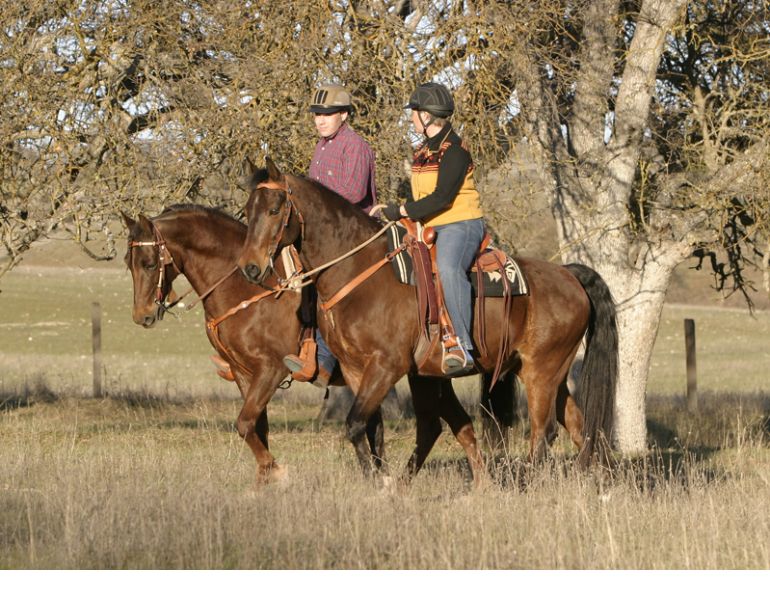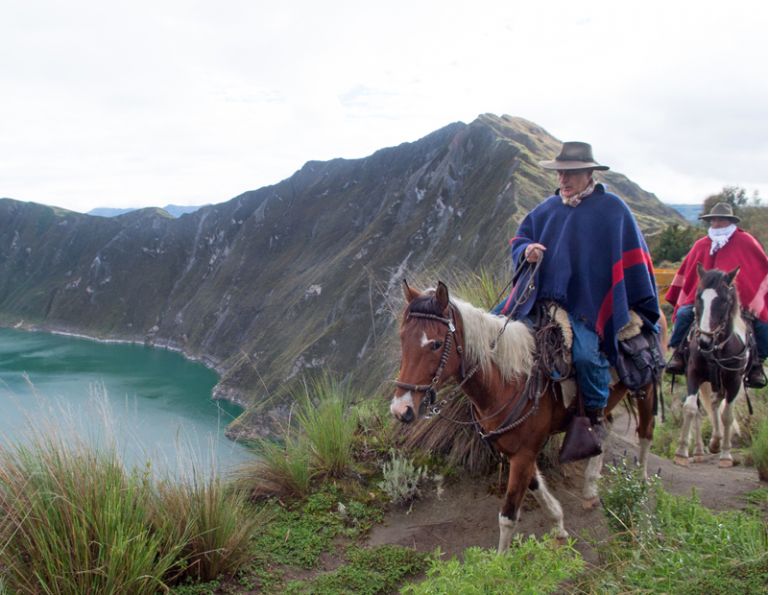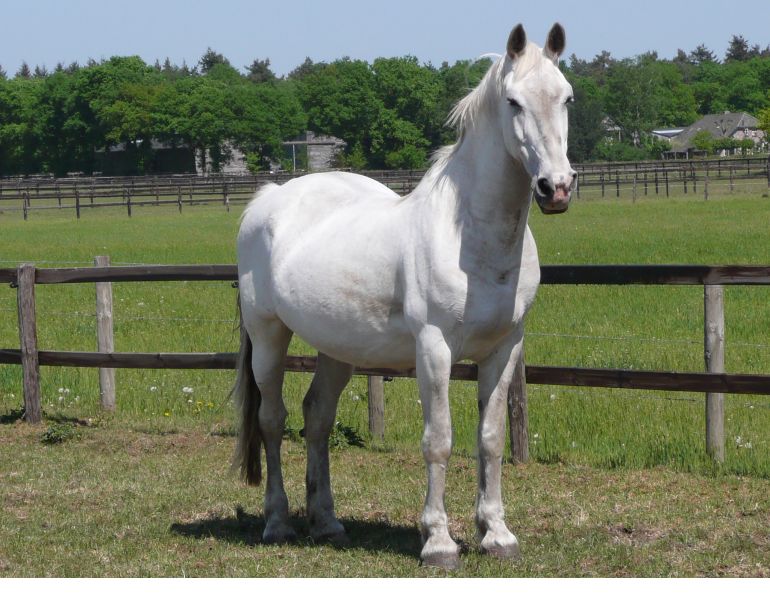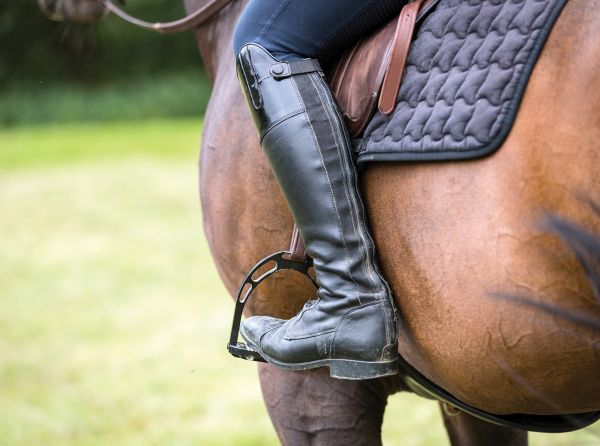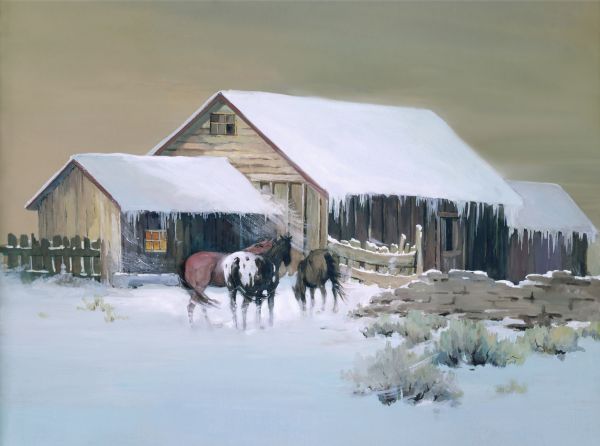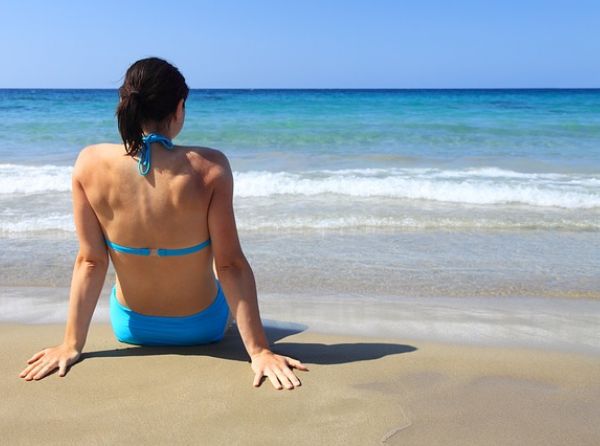By Stan Walchuk, Jr.
This article is to get us thinking about spring and preparing for the coming trail rides we have spent all winter looking forward to.
At our place this time of year we begin preparations for the coming season. For us it is mostly about repairing and preparing saddles, tack, and various types of camping gear. But there are other types of preparation that we do. This article is a checklist of things that one should do to get ready for trail riding. I would put “getting ready” in at least three categories: preparing ourselves, preparing our horses, and preparing our tack and gear.
Personal Preparation
I have always believed that successful trips are as much about personality as they are about planning. When I look back over the years, some my most memorable trips were done on a shoestring budget with less than state-of-the-art gear, and with horses that were not as savvy as those we own today. What we did have was the right attitude.
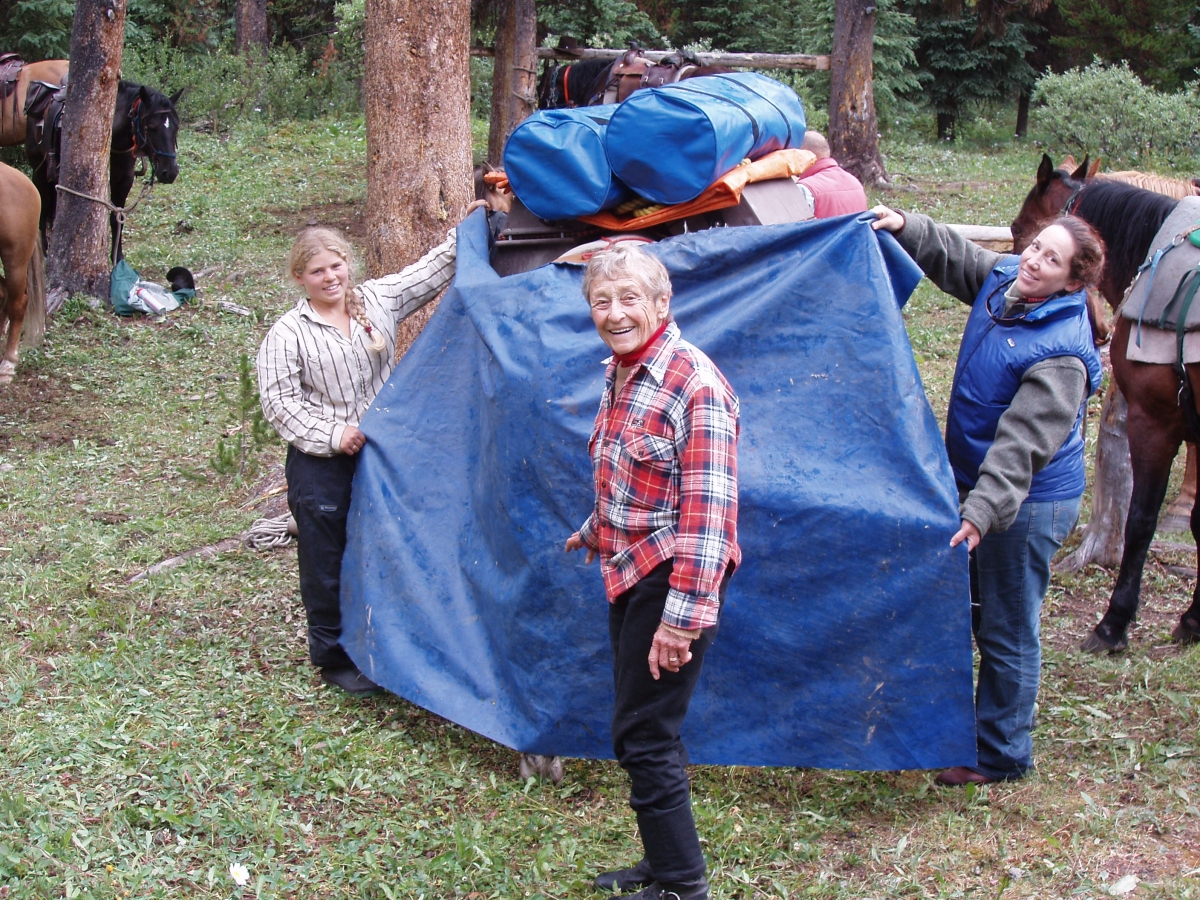
For seven years Christine and husband Pierre have been getting ready for their yearly wilderness self-guided trail rides. They are hovering around 80 years of age and are an inspiration to all of us about having the right attitude to enjoy the trail riding experience. Photo: Courtesy of Stan Walchuk, Jr.
Our civilized lifestyles keep us busy to the extent that stress is public enemy number one. Keeping up with the status quo is often a driving force for daily activities. We think, we plan, we pay, and we demand because we paid for it. We invent new worries and fears almost on a daily basis. So how do we separate ourselves from this civilized baggage that plagues us? How do we truly enjoy the contradiction that is a trail ride: the natural beauty, the simplicity, and the unexpected that we did not plan for?
In truth, I do not have the answer, but I know that letting go is everything if you want to enjoy your hour, your day, or your week on the trail. We need to consider that our time on the trail is a window of opportunity, a door that we walk through to a different world on the other side. It is our Land of Oz. Magically, problems melt away when we hit the trails mounted on old Dobbin. But you have to give it a chance.
Do yourself a favour and prepare before you enter the Land of Oz. Take care of business before you leave and plan your time so that you can leave cell phones and watches behind. I actually tell friends to put them away. There is nothing more irritating than riding horses down a trail with someone checking their wrist every half hour for the time.
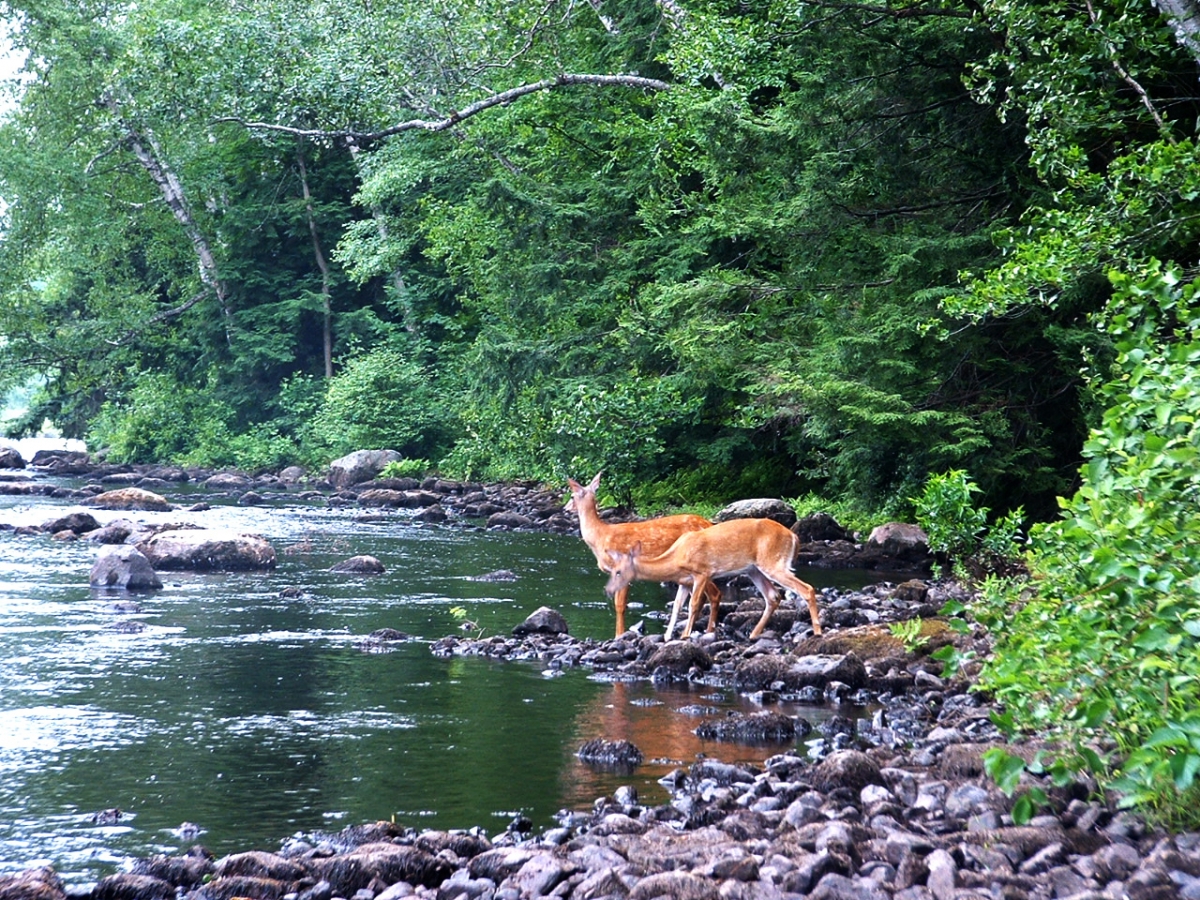
There are countless things that can and do go wrong on a ride like changes in weather, gear that does not hold up, trails that are more difficult and take longer to navigate than expected, horses that become idiots and people who are the same; the list goes on and on. You need to promise yourself to enjoy the trip no matter what happens. If you do not, if you sweat the little stuff and even if you sweat the big stuff, you are doomed before you begin.
Personally, I have only been able to survive as a trail rider and a wilderness traveler because I accept all of those things that go wrong, things that would drive a sane person insane, as regular activity, even a challenge. I have been accused more than once of having an “Oh yeah, so what?” attitude. Maybe it takes time and experience to help an individual to adapt and feel comfortable enough to truly let go and enjoy the hours on the trail. For the first dozen years of our marriage I knew that if my wife had a smile on her face after the first few days of a two week ride, she was likely inventing new ways to murder me when we got home. Now she can go a whole two weeks without losing it even when a spruce branch hits her face or her horse sits down in a mud hole. In short, do not visualize the perfect trip but take it as it comes and enjoy it.
Equine Preparation
Once you have the right attitude your horses become the key to a good or arduous experience. It is very difficult to provide quick guidelines for the right horse on a trail ride. For one thing, the topic could fill two books and for another, trail conditions and riders can vary considerably. For example, our operation needs horses that are sturdy, big boned, easy keepers capable of handling varying weights and load types. But there are countless people who ride countless hours on fine boned horses and have done so successfully for years. The key point here is to match your horse to you and to the type of trail riding you do.
I have always believed that as the rider or the load becomes heavier, the substance of the trail horse needs to increase. When I see a 220 pound rider on a fine boned horse with small feet I think to myself, “go ahead, enjoy your pleasure ride, but for your own and the horse’s sake lose 100 pounds or get a bigger horse before taking on backcountry trails and longer days.” Also keep in mind that trail riders typically fill their saddles with munchies, extra clothing, cameras, trail axes, etc. It is absolutely true that a smaller foot can be a good foot, as with many mules and Arabian horses, but if you do not match the quality and size of bone and foot to the trail ride and job at hand, it will likely be only a matter of time before you discover the many maladies that can beset a horse’s feet and legs.
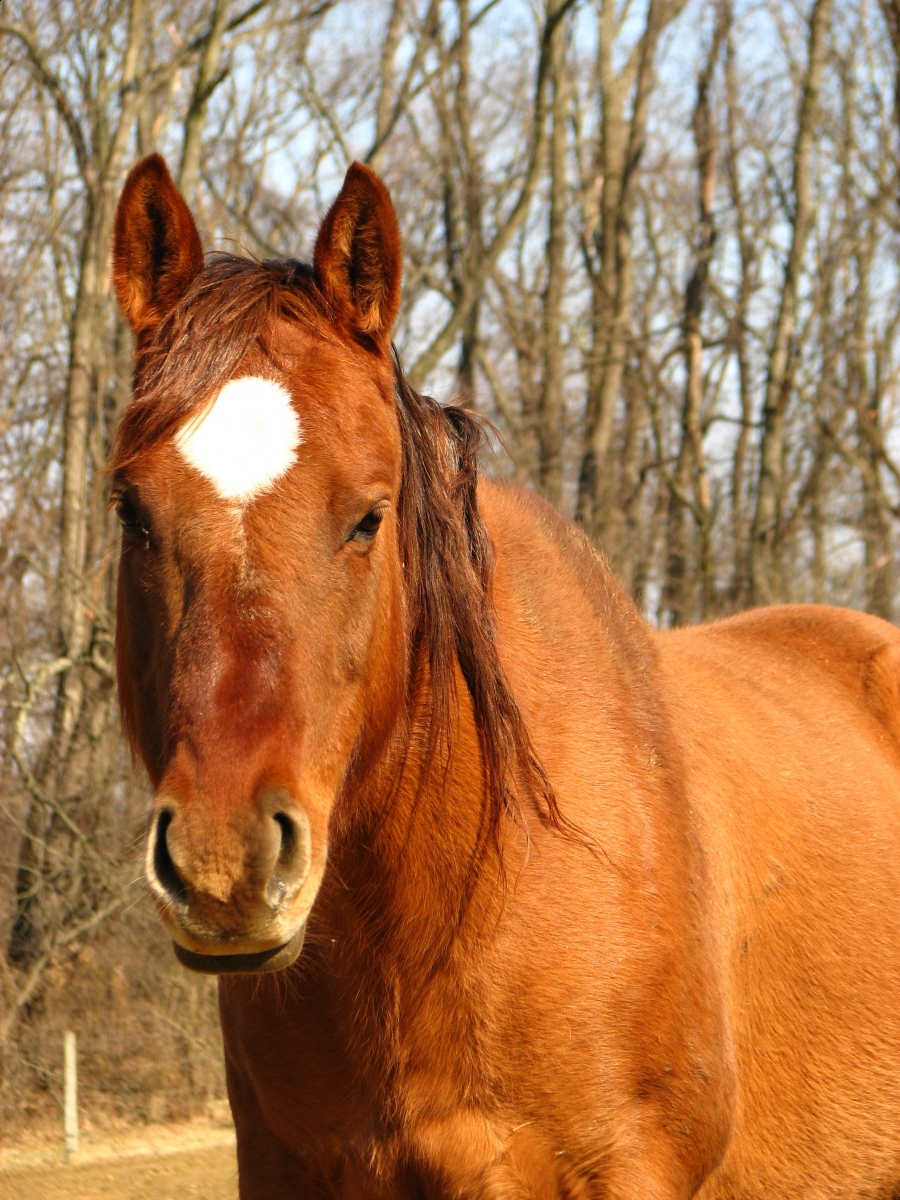
Choose a horse that suits you and the type of trail riding you do. Typically, the tougher the trail and the larger the load, the more substance the horse should have.
If you feel that a trail horse is your companion in the field, corral, and paddock, you are in for a whole new revelation as you take him out on the trails for longer trips. When you live together on the trail for days on end, you learn all of the quirks, good habits, bad habits, strengths, and weaknesses of your horse (and yourself). You know when I really appreciate a horse? When I have spent two weeks on a trail that has thrown everything at me for over 100 miles and at the end of the trip I did not even have to think about that horse, did not even notice him. Many good adjectives describe the faceless horse with a soul to cross a river with: sincere, no issues, honest, reliable, respectful, responsive, and more.
I completely understand that I am the odd man out. Most riders ride with one eye in the mirror believing that looks do count and pedigree matters; millions of dollars trade hands when purchasing horses with a nod to the status quo. But I promise you that when your horse fights you on the trail, when it spooks at every white rock, piece of litter or bird, when it moves off as you mount it, fusses when you want to stand and enjoy the scenery, spooks as you reach for your lunch or rain slicker… then looks and pedigree suddenly become more distant than your truck and trailer. How many people get hurt or killed on the trail each year because they rode horses that were less than reliable?
In preparation for your coming trail rides, get comfortable with where your horse’s training is at. Do not just jump on your horse because it was good to ride three months before. Complete some meaningful groundwork with an eye to basic training, the ABC’s. Make sure the horse is post broke and ground ties (stands calmly when tied and stands when the lead or reins are dropped on the ground). Be sure the horse stands calmly when you mount. Be sure that the horse respects you and that you have achieved complete “join up.” Be sure that the horse responds softly to your cues when on the ground and in the saddle. Moving forward freely, moving over when you are on the ground and saddling and packing, and moving back are regular expectations with trail horses.
Do not make excuses for your horse when it does not perform the above tasks freely and easily. Get the proper training or the proper horse, or both. A calm, forgiving nature in a trail horse is everything. Significant problems and dangerous circumstances plague riders every season when they ride hot blooded horses trained for performance disciplines, or horses that lack good ground manners and a steady disposition. Dual purpose is great but it really has to be dual purpose.
Pay attention to preparing your horse’s feet for the coming season. I tend to trim my horses’ feet a little less often in the winter than the six weeks recommended because hoof growth slows in the winter and my horses have very solid, thick walled feet that do not suffer cracks or other problems. You need to keep a horse’s feet in the condition needed to ride barefoot or put on shoes of your choice. Having the farrier show up and expecting him to shoe a hoof wall with big chunks missing is not pleasant for the horse, the farrier, or yourself. Do some research on shoe types and talk with farriers before deciding what is best for your trail ride and the terrain you ride. You are always safer with shoes on when riding over a lot of rocky ground. The last several years we have gone to the St. Croix eventer shoe for trails, which is basically a wide based rim shoe.
Gear Preparation
Let’s look at your saddle, tack, and gear. You should use quality leather in all components including the saddle, rigging, saddle bags, and axe and rifle scabbards. If you are a smart shopper you can buy quality leather saddle bags for under $200. Be sure that they have strong joining points with rivets as well as being sewn.
These 11 by 11 inch saddle bags and rain slicker with warm vest inside will provide the room for all that you really need. Avoid high, bulky loads behind your seat as they can make it difficult to mount and dismount. Be sure to balance the weights of gear on both sides of your horse. Photo: Courtesy of Stan Walchuk, Jr.
Although you should not really need saddle bags larger than nine by nine inches, I prefer bags around 10 by 10 or 11 by 11 inches because there are times when I need to store light, bulky vests, etc. Horn packs can be very handy but I do not use them because I really do not need them, although it is handy to reach forward for items rather than backward.
Avoid large bulky loads tied behind your seat as they can interfere with mounting and dismounting, which must be done in a hurry in sticky situations. Several times I have seen riders who, after struggling to get on and off horses loaded high with a synthetic saddle bag and cantle system, toss the bags aside a few days later swearing never to use them again. Because we often walk out after we get to where we are going, we often hang a small day pack, loaded lightly, on the off side of the saddle horn. Many guides prefer to wear their day packs on their backs as they ride but I never appreciated the feel and could never see the advantage in it.
Axes need to be safely sheathed. Colour your sheath brightly or you will lose it in the vegetation. We use a three quarter length trail axe. A logger’s limbers axe will work well. A trail axe has a narrower profile than a standard pole axe or splitting axe as it is meant to slice through branches and deadfall in a hurry. I always carry my axe on the off side, head forward, and my firearm scabbard on the near side, butt forward and up. It is mostly personal preference but be sure that the total weight on the off side of the saddle, including saddle bags, matches the near side.
We wrap rubber or leather sheathing around our saddle horns as a roper would because we are constantly leading horses and the pressure from the lead rope will chafe and wear the horn leather. Tie a ring to a left side front lacing and use it to tie up your lead rather than your saddle horn. This will reduce bulk and make more room for the lead rope.
This is a well rigged trail saddle with stirrup hood covers and a ring to tie your lead rope. Photo: Courtesy of Stan Walchuk, Jr.
Stirrup hoods (tapaderos) are a wonderful feature. They help protect footwear, keep feet drier and warmer, and prevent feet from becoming jammed in the stirrup. They also prevent sticks from going through the stirrup and jamming into the horse’s gut, a very real tragedy that spooks horses and injures riders and horses each year.
You may get by on short rides with a poor fitting riding saddle but heavy weight, up and down terrain, and long days make a properly fitting saddle a must. Your light pleasure saddle is fine for light use but skookum trips require skookum saddles. We prefer a double cinched roper type saddle that has some weight to stabilize the load, although proper fit probably goes further with stabilizing the load than the weight of the saddle itself. The back cinch needs to be snug at all times and it does help stabilize the load and reduces unnecessary movement and friction. If your back cinch is loose it will serve no purpose at all and will be a catch trap for sticks that jam into the gut – take it off. A chest strap is valuable on all saddles and necessary for flat stomached horses and hilly rides. When the horse stands relaxed and you pull forward on the chest collar, you want two to three inches of slack between the collar and the chest.
Keep the weight on your horse to a minimum. We typically have a light rainsuit, warm coat, gloves, lunch, munchies, small camera, compact binoculars, map, headlamp, and trail axe on our horse. Avoid all other unnecessary items.
Constant technological improvements to clothing, footwear, and camping gear have us all hoodwinked into believing that we need to drop a $1000 at the outfitters’ supermart before we hit the trail. Nonsense. You can stay dry, warm, and comfortable in moody weather with basic gear and camp equipment. I recall sitting on a stream bank deep in the Mackenzie Mountains of the Northwest Territories. A seasoned guide, a veteran of many years in this harsh northern wilderness, had disappeared into the thickets at the base of a nearby mountain with his tourist client. A few hours had passed and I was tired of glassing nothing with my binoculars and wishing they would return.
Imagine my surprise when my lens settled a few miles distant on a high, rugged, long ridge and there was the old guide, a dark silhouette striding along the ridgetop like he was on a Sunday stroll, when he had already walked many miles over rock, scrabble, and steep slopes. What struck me with humourous amazement was that this guide wore an old wool coat, gray wool pants, and 20 dollar gumboots. The client who was decked out with the latest Gortex fashions and $400 mountain boots had been left behind and was likely resting on some lower slopes. It was a good example of the benefits of a good attitude and a simple approach, and that money does not always buy happiness.
So, good luck with your preparations for the coming trail season. Happy Trails!
Main photo: Trail riding is a window of opportunity. To truly enjoy its freedom we need to let go of our expectations, worry, and modern gadgets. Photo courtesy of Stan Walchuk, Jr.



